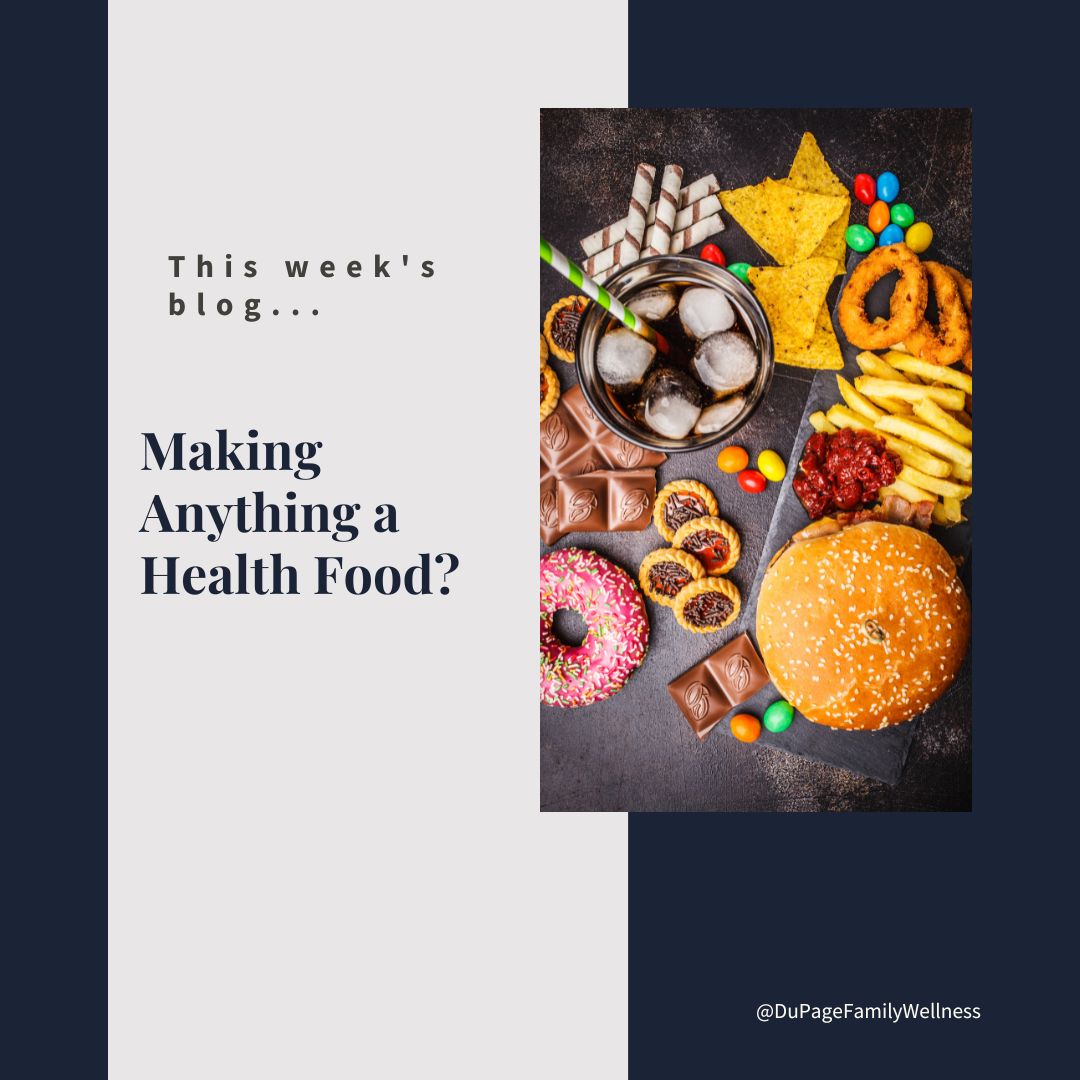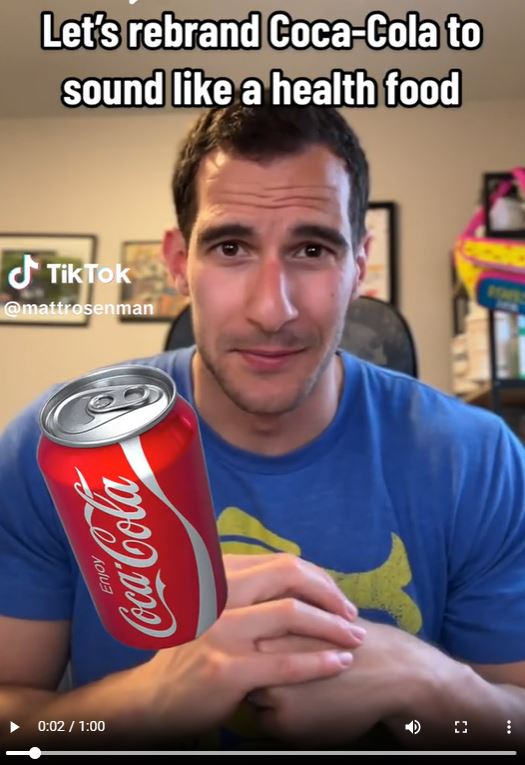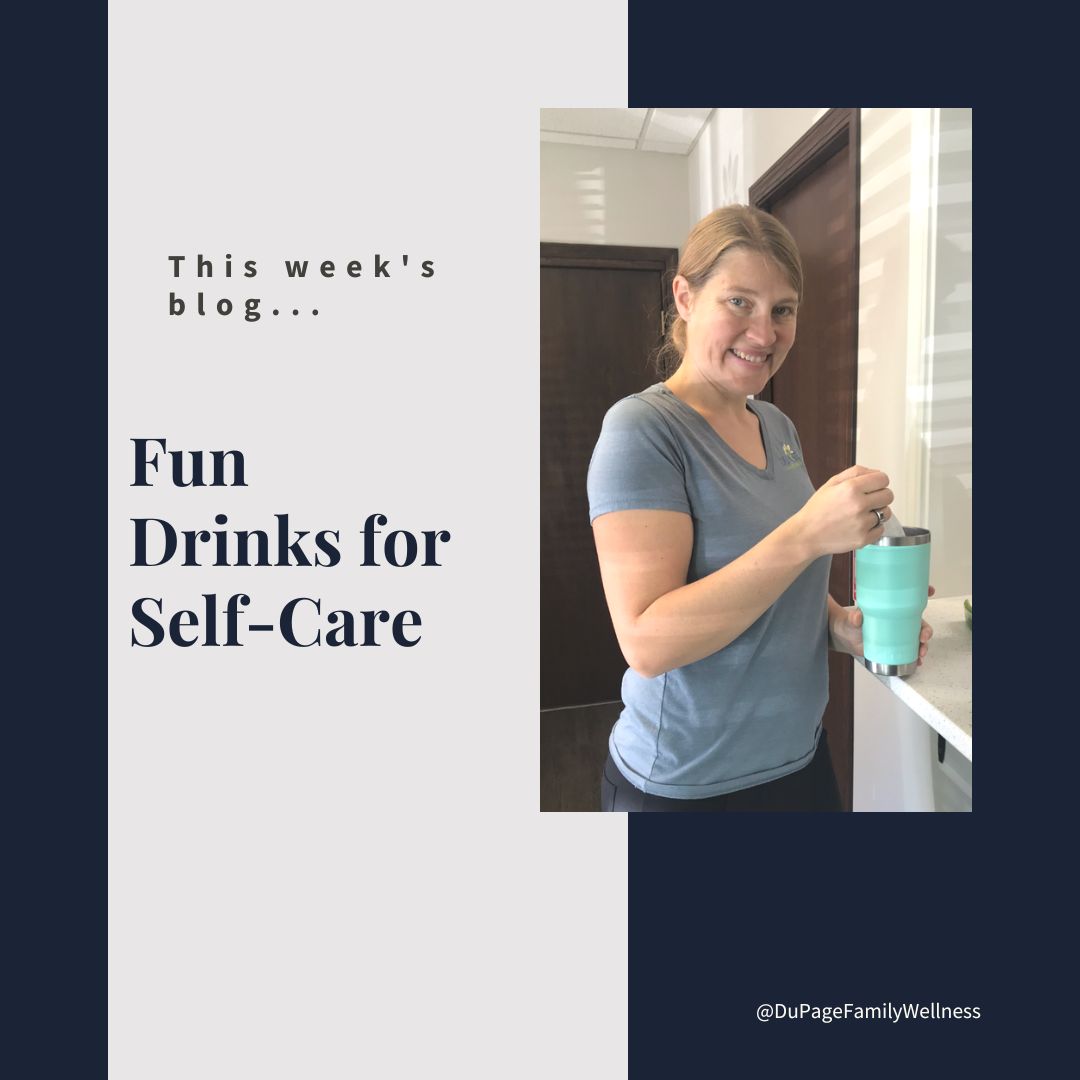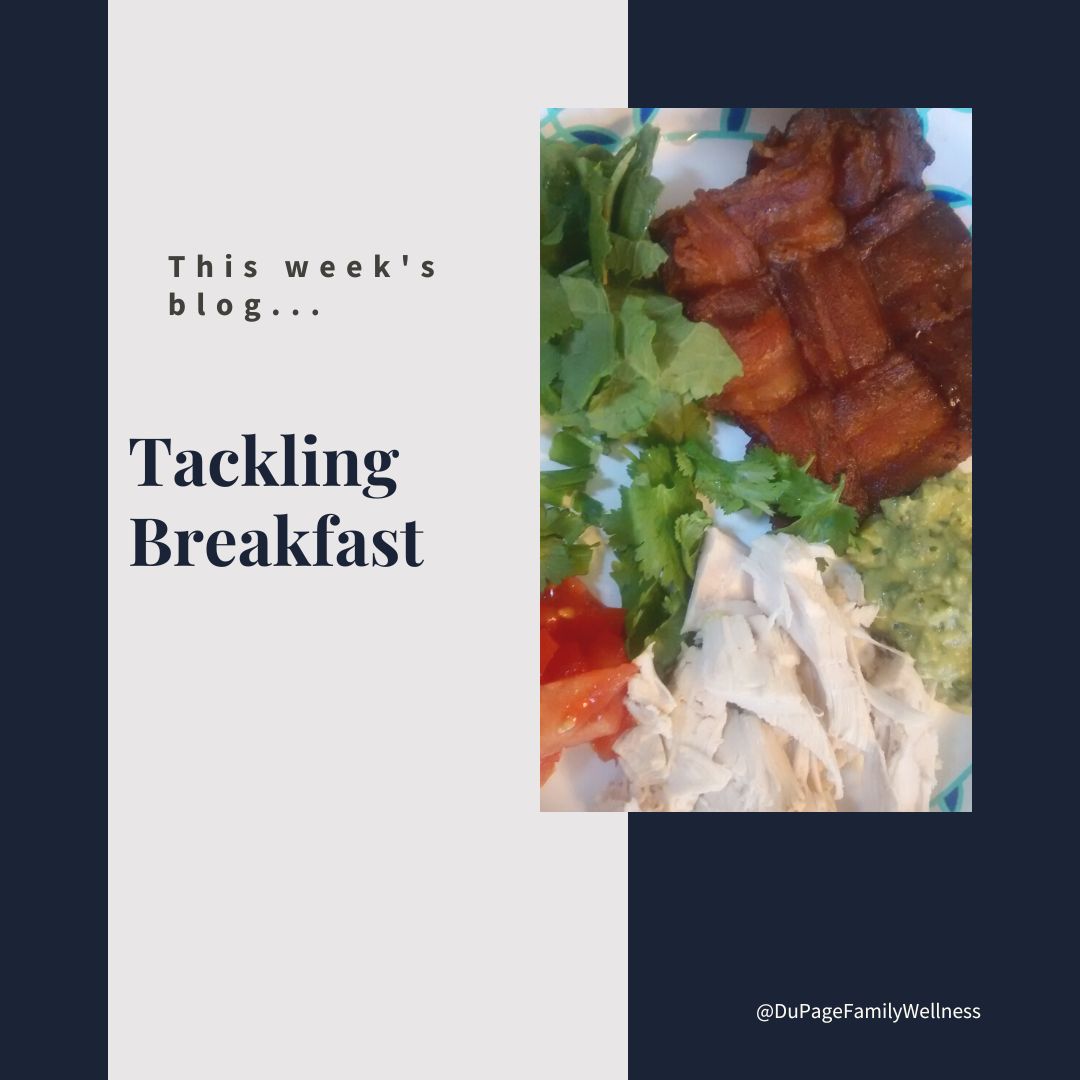 One of the things we are very conscious of in our house is reading labels. We do not pay attention to the buzzwords on the package or focus on the nutrition label. The valuable information is found on the ingredient list.
One of the things we are very conscious of in our house is reading labels. We do not pay attention to the buzzwords on the package or focus on the nutrition label. The valuable information is found on the ingredient list.
Food marketers are tricky; they do a fantastic job of confusing consumers. Phrases like gluten-free, low-fat, heart-healthy, and all-natural give us the impression that the food is good for us.
Many of these claims are unregulated making it easy for companies to make products sound healthier than they are. They hope this will draw our attention away from the ingredients that are less than ideal.
Let’s explore some marketing strategies companies use to try to manipulate us.
The Company's Bottom Line
We must remember that a company’s main concern is the bottom line. Its job is to make the most money for the investors, not the healthiest food for you. If it takes some tricky marketing to get you to buy their product, most will do so without question.
Most manufacturers try to make their food addictive. Companies combine sugar, salt, fat, and chemicals in ways that make us crave their products. These products create additive-type behaviors that are not seen with less processed foods. Then they keep their costs low by making the food's shelf life as long as possible so there is less waste. This may involve using preservatives and other ingredients that are not in our best interest.
My goals are the opposite of these companies. I do not want to feel out-of-control cravings for processed foods. I want to choose nutrient-dense food made from high-quality ingredients. This often means that the food will go bad in a relatively short time. If it will last on a shelf forever it is probably full of chemicals to keep the bacteria away.
Rebranding Products
Health food branding expert Matt Rosenman explains some ways marketing can be deceptive in his funny videos where he rebrands candy to look like a health food. Just click on the one minute videos below to see how easy it is for marketing companies to manipulate consumers.


My Bottom Line
If we want to eat healthy it is important to outsmart these corporations. A little bit of cynicism while reading the packaging is the first step. We cannot count on a glance at the package to give us an accurate assessment of the product.
Ignore the buzzwords, since many are unregulated making them meaningless. Use caution when looking at the nutrition label. Companies tend to make serving sizes unreasonably small to give you the impression that the calorie and sugar count is lower than it is.
Instead, go straight to the ingredient list. Look up any ingredients you do not recognize to see if it is something you want to put in your body. This is the key to cutting through tricky marketing and getting the information you need.
My favorite packages are the ones with a few simple ingredients. It takes the mystery out of deciding if I want to put the food in my body.
Dr. Jamie
 It is challenging to embrace the magic of holiday mornings when you are rushing around trying to make a special breakfast. You deserve to enjoy the morning and a delicious meal without stress. After all, it is your holiday too!
It is challenging to embrace the magic of holiday mornings when you are rushing around trying to make a special breakfast. You deserve to enjoy the morning and a delicious meal without stress. After all, it is your holiday too!
Planning and preparing ahead of time will free you up and allow you to focus on what’s important. Recipes that can be made the day before will be especially helpful. It won’t take much effort but can make a huge difference in your experience of the holiday.
Let’s look at some great recipes that will set you up for a wonderful holiday!
Avocado Boats
These avocado boats provide healthy fats and protein. It will balance out any sweet treats and keep you full until lunch. Preparing the ingredients ahead of time will make assembling them a snap.
Cook the bacon ahead of time, and chop the toppings. In the morning you will just need to cut the avocados, assemble them, and bake (about 15 minutes plus time for the oven to preheat.)
Paleo Breakfast Casserole
This unique breakfast casserole includes sweet potato and Brussels sprouts, as well as traditional eggs and bacon. It will keep you full until lunch and balance out the sweet treats that tend to be part of holidays.
Prepare the bacon and veggies the night before. In the morning, simply add the eggs and bake (about 25 minutes plus time for the oven to preheat).
*Recipe from The Paleo Running Momma
Egg-Free Breakfast Bowls
Not everyone can eat eggs or likes them. Whether you eat eggs or not, this egg-free breakfast bowl will be a hit. It looks delicious and provides great nutrients to start the day.
Make or buy fresh guacamole and pico de gallo to make the recipe less labor-intensive. Cook the sausage, and chop the sweet potatoes and kale the day before. In the morning, throw the sweet potatoes in the oven (about 30 minutes plus time for the oven to preheat). While they cook, saute the kale before assembling the bowls.
*Recipe from Paleomg
Oven Baked Bacon
Simple bacon is always enjoyed. It contains protein and fat which helps keep your blood sugar stable. However, it can be pretty labor-intensive to fry small batches in a pan.
If you want to make a large amount of bacon, you can put it in the oven (about 15 minutes plus time for the oven to preheat). Oven-cooked bacon turns out crispy every time.
*Recipe from Nom Nom Paleo
Paleo Blueberry Muffins
Who doesn’t love a good blueberry muffin? But many packaged varieties have fillers that you may not want to put in your body. Even homemade ones can be loaded with sugar.
These Paleo muffins are made with clean ingredients, sweetened with maple syrup, and can be made ahead of time. There are sure to be a hit with everyone, including any kids that will be there.
*Recipe from Downshiftology
Healthier Peach Crisp
Fruit crisps are delicious, but tend to be filled with unnecessary sugar. This peach crisp is made with almond flour and a bit of maple syrup. You can make it with fresh or frozen peaches.
Make sure frozen peaches are defrosted. This can take around three hours at room temperature. You can make the topping the day before, then sprinkle it over the peaches in the morning, and bake (about 40 minutes plus time for the oven to preheat).
*Recipe from Elana’s Pantry
Read more ...
 As much as we want to enjoy the holidays, stress can overshadow the joy. We may try to cope by eating the many sweet treats around us. Eating when you are stressed is considered emotional eating.
As much as we want to enjoy the holidays, stress can overshadow the joy. We may try to cope by eating the many sweet treats around us. Eating when you are stressed is considered emotional eating.
It is an attempt to fill an emotional need rather than a physical one. The surge of dopamine after a sweet treat brings temporary relief but doesn’t last. The stress will return and may be compounded by regret.
Let’s take a look at emotional eating and how to handle it throughout the holiday season.
Building Awareness
Self-awareness is the first step to breaking the cycle of emotional eating. It is a skill to be able to identify when you are really hungry and when you are trying to meet an emotional need.
Ask yourself if you are stressed, sad, lonely, angry, or bored before you grab a bite to eat. If you are experiencing a difficult emotion, ask yourself if you are really hungry or if you are trying to meet an emotional need.
Sometimes it can be hard to tell. The Mayo Clinic has identified some clues you can look for to determine if you are really hungry.
For instance...
- physical hunger generally builds gradually after not eating, while emotional hunger can come on suddenly even if you have recently eaten.
- physical hunger is felt in the stomach, while emotional hunger is felt in the mind.
- physical hunger builds gradually and there is patience felt in meeting that need, while emotional hunger tends to demand an immediate response.
- emotional hunger often feels like it can only be satisfied with a specific type of food, while physical hunger can be satisfied with many different options.
- emotional eating often makes you feel ashamed, while physical hunger simply leaves you satisfied.
An Intentional Choice
Once you recognize what is driving you to reach for food, you can intentionally choose a response. You may still choose to eat the treat even if you are not truly hungry. If so, enjoy every bite without guilt. Making your decision consciously is a great practice to develop.
If you decide to skip the treat for now, here are some things that can help you stick to your choice in the moment...
- distract yourself for a time (watch a show, read a book, etc.)
- remove yourself from the situation (go for a walk, take a drive, leave the room, etc.)
- reach out to a friend (make a phone call, send a text message, etc.)
- lean into the difficult emotion (let it wash over you knowing it is temporary.)
- comfort yourself through self-care (journal, create something, do something artistic, etc.)
- rest or take a nap if you are tired (lay down for a nap, stare out the window, etc.)
- exercise (even gentle movement can be beneficial.)
- practice, meditation, mindfulness, or self-compassion exercises.
Enjoy the season. It’s okay to treat yourself to foods you might not otherwise eat. Make these choices intentionally, so you can truly enjoy them without regret!
Dr. Jamie
 Thanksgiving dinner may be the biggest meal of the year! In fact, it is thought that most people eat more in this one meal than a twenty-year-old, six-foot-tall, 270 lb., active man would need to eat in an entire day.
Thanksgiving dinner may be the biggest meal of the year! In fact, it is thought that most people eat more in this one meal than a twenty-year-old, six-foot-tall, 270 lb., active man would need to eat in an entire day.
With turkey, a bunch of sides, and dinner rolls there is something for everyone. Many times drinks and desserts follow the meal with a second dinner of leftovers later in the day. No wonder we feel so tired and our pants feel tight.
I’m not a big fan of counting calories, but I do think we would feel better if we were more intentional about our choices. If you are cooking this year, consider using recipes that contain real, unprocessed, nourishing ingredients.
Here are some recipes to help you make the season's traditional dishes in a healthier way. You will be inspired to try more of these recipes when you see how good they taste and how good you feel!
Appetizers:
Easy Whole30 Paleo Snack Board | Kimbrough Daniels
Bacon-Wrapped Butternut Squash Recipe | Paleo Leap
The Best Paleo Meatballs - Whole30 Friendly! - Fresh Water Peaches
Sweet and Tangy Lil' Smokies | Plaid & Paleo (plaidandpaleo.com)
The Bird
Easy Roasted Turkey with Sage Butter
Butterflied Turkey Recipe
Stuffing
Sausage Apple Cranberry Stuffing
Paleo Comfort Food Stuffing
Green Bean Casserole
Paleo Green Bean Casserole
Sweet Potato & Squash
Sweet Potato Casserole
Roasted Garlic & Butternut Squash Mash
Butternut Squash Risotto
Cranberries
3 Ingredient Cranberry Sauce
"Mashed Potatoes"
Cauliflower "Mashed Potatoes"
Brussel Sprouts
Roasted Brussels Sprouts with Bacon
Beautiful Brussels Sprouts with Onion & Squash
Desserts
Pumpkin Bars
Pumpkin Pie
Apple Crisp
Nonalcoholic Drinks
How To Make Virgin Piña Coladas - Strength and Sunshine
Watermelon + Cucumber Cooler - the Whole Smiths
Non-Alcoholic Paleo Strawberry Mojito - Paleo Grubs
You can enjoy a beautiful meal that will leave you feeling good! Let me know if you try any of these recipes and send me a picture of the ones you liked the most!
Dr. Jamie Thomure and Joelle Kurczodyna
This blog was originally put together by my sister Joelle Kurczodyna. She has a certification in Nutritional Therapy (NTP), is a mom of three kids, and has a homestead with two cows, more than twenty chickens, and a bunch of vegetables! To learn more about the awesome things she is up to, follow her on Instagram at
@fromscratchfarmstead.
 As we go into the winter, many people feel the need for a little self-care. However, this can be difficult with so much to get done during the holiday season. It’s important to find little things that you look forward to each day rather than waiting for an opportunity to do something big.
As we go into the winter, many people feel the need for a little self-care. However, this can be difficult with so much to get done during the holiday season. It’s important to find little things that you look forward to each day rather than waiting for an opportunity to do something big.
Making a special drink can be a quick way to take care of yourself in these busy times. Now I’m not suggesting you make a cocktail or put vodka in your water bottle; there are plenty of fun healthy alternatives that you can enjoy without guilt.
In addition to lifting your spirits, these drinks provide hydration and health benefits. It doesn’t take much to grab these drinks during a busy day if you do a little preparation ahead of time.
Let’s take a look at some drinks you may enjoy.
Kombucha
Kombucha is a fermented drink. It is made when you combine tea, sugar, and a SCOBY. That funny word is an acronym for a “symbiotic colony of bacteria and yeast.” As the bacteria eats the sugar it produces probiotics which are good for your gut and help keep the bad bacteria in check.
There are many flavors on the market today. Some brands have high levels of sugar, so be sure to read the label before buying a jar. Kombucha is also relatively easy to make at home which allows you to control the ingredients even more. Check out this article about the benefits of kombucha and how to make it.
If you are ready to make your own kombucha, you can get the Urban Kitchen organic starter SCOBY. Otherwise, you may enjoy premade kombucha from these brands…
Water Kefir
Traditional kefir is a fermented drink made from milk with a variety of bacteria and yeast. As you would probably guess, water kefir is made following the same process using water as the base.
It is difficult to find premade water kefir, but it is really easy to make. Simply get the grains, put them in sugar water, and let them ferment. It will be ready to drink after the first fermentation which takes a few days. Some people enjoy adding flavor and fermenting it for another couple of days to enhance the taste and make it a little bubbly.
If you would like to learn more or are interested in making your own, check out this article. You can find the Florida Sun Live Kefir Grains on Amazon. They will multiply over time, so you shouldn’t have to buy more and will eventually be able to share them with friends.
Coconut Water
Coconut water is naturally sweet making it taste great. It is a good source of nutrients such as magnesium, calcium, phosphorous, and potassium. In fact, it has more potassium than a banana.
Some studies suggest that coconut water may provide antioxidants, lower blood sugar in those with diabetes, decrease the risk of kidney stones, and support heart health. However, more research is needed to support these claims. For more information on the health benefits, check out this article from Healthline.
It is important to look at the ingredient list when purchasing coconut water. Some companies add sugar, preservatives, or additives. Paloehacks has done your research for you in “Six Healthiest Coconut Water Brands.” Here are some of the top brands.
Mineral Water
Mineral water with a splash of juice is a lovely treat; you can choose any juice you like. It will give you the flavor without the higher sugar levels of straight juice.
You can also put a couple of tablespoons of balsamic in your sparkling water. Yes, it sounds gross, but don’t knock it until you try it. Start with a fruity flavor such as mango, blueberry, strawberry, peach, or lemon. For a tried and true recipe check out the Sparkling Balsamic Refresher from the Vintage Olive.
Read more ...
 Setting your kid’s school day off with a solid breakfast will help them stay focused and prevent them from becoming hungry mid-morning. It doesn’t have to be anything fancy, in fact, simple can actually be better.
Setting your kid’s school day off with a solid breakfast will help them stay focused and prevent them from becoming hungry mid-morning. It doesn’t have to be anything fancy, in fact, simple can actually be better.
The goal is to keep their blood sugar from spiking, by giving them enough protein and fat to balance any carbohydrates. Aim for a high protein, moderate fat, and lower carbohydrate meal.
Let’s look at ideas for quick nutritious breakfasts that you and your kids will love.
Follow a Recipe
Many people like to follow a recipe when they cook. They may be more confident with something tried and true. Here are some great recipes to choose from.
Create Your Own
You may be a confident cook that likes to create new recipes on your own. The lists below provide endless options to play around with. Just choose one or more items from each list to make a casserole, scramble, or skillet.
Protein
- Bacon
- Beef
- Chicken
- Eggs
- Ham
- Lamb
- Protein Powder (Collagen Peptide)
- Seeds - pumpkin, chia, hemp hearts, etc.
- Salmon, Tuna, Mackerel
- Sausage, Chicken Sausage
- Tofu
- Turkey, Turkey bacon
Fat
- Avocado oil
- Butter (if you tolerate dairy)
- Coconut oil
- Ghee (if you tolerate dairy)
- Olive oil (low-heat recipes only)
Non-Starchy Veggies
- Artichoke
- Asparagus
- Beans - green, Italian, yellow, wax
- Beets
- Bok choy
- Broccoli
- Brussels sprouts
- Cabbage
- Fennel
- Greens (collard greens, dandelion, kale, mustard, turnip)
- Leeks
- Squash (summer, zucchini)
- Tomatoes
*Be creative, breakfast doesn’t have to look like breakfast; leftovers work just fine!
Be sure to take as good care of yourself as you do your kids. You deserve a healthy breakfast too!
Dr. Jamie
P.S.
Could you share some of your favorite healthy breakfast ideas and recipes with me? My family is looking for some new things to try.
 One of the things we are very conscious of in our house is reading labels. We do not pay attention to the buzzwords on the package or focus on the nutrition label. The valuable information is found on the ingredient list.
One of the things we are very conscious of in our house is reading labels. We do not pay attention to the buzzwords on the package or focus on the nutrition label. The valuable information is found on the ingredient list. 

 It is challenging to embrace the magic of holiday mornings when you are rushing around trying to make a special breakfast. You deserve to enjoy the morning and a delicious meal without stress. After all, it is your holiday too!
It is challenging to embrace the magic of holiday mornings when you are rushing around trying to make a special breakfast. You deserve to enjoy the morning and a delicious meal without stress. After all, it is your holiday too! As much as we want to enjoy the holidays, stress can overshadow the joy. We may try to cope by eating the many sweet treats around us. Eating when you are stressed is considered emotional eating.
As much as we want to enjoy the holidays, stress can overshadow the joy. We may try to cope by eating the many sweet treats around us. Eating when you are stressed is considered emotional eating. Thanksgiving dinner may be the biggest meal of the year! In fact, it is thought that most people eat more in this one meal than a twenty-year-old, six-foot-tall, 270 lb., active man would need to eat in an entire day.
Thanksgiving dinner may be the biggest meal of the year! In fact, it is thought that most people eat more in this one meal than a twenty-year-old, six-foot-tall, 270 lb., active man would need to eat in an entire day. As we go into the winter, many people feel the need for a little self-care. However, this can be difficult with so much to get done during the holiday season. It’s important to find little things that you look forward to each day rather than waiting for an opportunity to do something big.
As we go into the winter, many people feel the need for a little self-care. However, this can be difficult with so much to get done during the holiday season. It’s important to find little things that you look forward to each day rather than waiting for an opportunity to do something big. Setting your kid’s school day off with a solid breakfast will help them stay focused and prevent them from becoming hungry mid-morning. It doesn’t have to be anything fancy, in fact, simple can actually be better.
Setting your kid’s school day off with a solid breakfast will help them stay focused and prevent them from becoming hungry mid-morning. It doesn’t have to be anything fancy, in fact, simple can actually be better. 